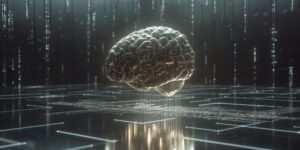Introduction: In today’s fast-evolving tech world, machine learning (ML) stands at the forefront of innovation. From voice assistants like Alexa to personalized movie recommendations, ML is transforming how businesses and individuals interact with technology. As a machine learning enthusiast, freelancer, or someone working in the tech-savvy side hustle space, understanding ML’s real-world applications is crucial. Let’s explore how machine learning is revolutionizing industries, the challenges it presents, and how you can leverage it.

What is Machine Learning?
Machine learning is a subset of artificial intelligence (AI) that enables systems to learn and improve from experience without being explicitly programmed. By processing vast amounts of data, ML models can recognize patterns, make decisions, and predict outcomes, making it an invaluable tool across industries.
The Machine Learning Process: A Step-by-Step Guide
- Data Collection and Preparation: Everything begins with data. For any ML model to work, companies gather large datasets from various sources such as customer interactions or IoT devices. Once the data is collected, it needs to be cleaned and structured for analysis. Poor-quality data leads to poor predictions, so this step is vital.
- Choosing the Right Algorithm: Selecting the correct algorithm is key to ensuring successful outcomes. For instance, linear regression models work well for predictive analysis, while deep learning models like neural networks are better for more complex tasks like image recognition.
- Training the Model: The model “learns” by analyzing the data provided. In this phase, patterns, correlations, and anomalies are detected, and the algorithm adjusts itself to improve performance. The model’s accuracy improves as it processes more data, enabling it to make more precise predictions.
- Testing and Evaluating the Model: Once the model is trained, it’s crucial to test it. A separate set of data is used to measure how well the model can make accurate predictions. This evaluation uses metrics such as accuracy and recall to ensure the model performs reliably.
- Deploying the Model: After testing, the model is ready for deployment in real-world applications. For example, e-commerce platforms use machine learning models to predict user behavior, offering personalized recommendations that increase sales.

Real-World Applications of Machine Learning
- Healthcare: In healthcare, ML is revolutionizing diagnostics. For instance, IBM’s Watson analyzes medical records to help doctors diagnose diseases more accurately and efficiently. By processing vast amounts of patient data, machine learning models can even predict the likelihood of future illnesses, allowing for earlier interventions.
- Finance: The finance sector has greatly benefited from machine learning, particularly in fraud detection. Companies like PayPal use ML algorithms to process millions of transactions daily. By spotting unusual behavior patterns in real time, these models prevent fraudulent transactions and secure user accounts.
- Retail: Retail giants such as Amazon are using machine learning to optimize their supply chain. By analyzing past sales and market trends, ML models predict product demand, helping companies manage their inventory better and reduce waste.
Challenges and Solutions in Machine Learning
While machine learning offers many benefits, it’s not without challenges. Let’s look at some common issues and their solutions.
- Data Privacy Concerns: Machine learning relies on vast amounts of personal data, raising concerns about privacy. Ensuring strict data encryption and adhering to privacy regulations, such as GDPR, can mitigate these concerns. Learn more about GDPR compliance.
- Interpretability of Models: Some models, particularly those built using deep learning, are often referred to as “black boxes” because their internal workings can be hard to interpret. To address this, developers are increasingly using explainable AI (XAI) tools, which help break down how models make decisions.
- Data Bias: Bias in datasets can result in unfair outcomes, particularly in industries like hiring and finance. Regular audits and the implementation of fairness algorithms can help ensure more equitable predictions.

Key Takeaways
Machine learning is more than a buzzword—it’s a transformative technology that’s already making waves in industries like healthcare, finance, and retail. By understanding how machine learning works and recognizing its challenges, you can harness its potential to boost your side hustle or career in tech. Ready to dive into the world of machine learning? The time is now!










